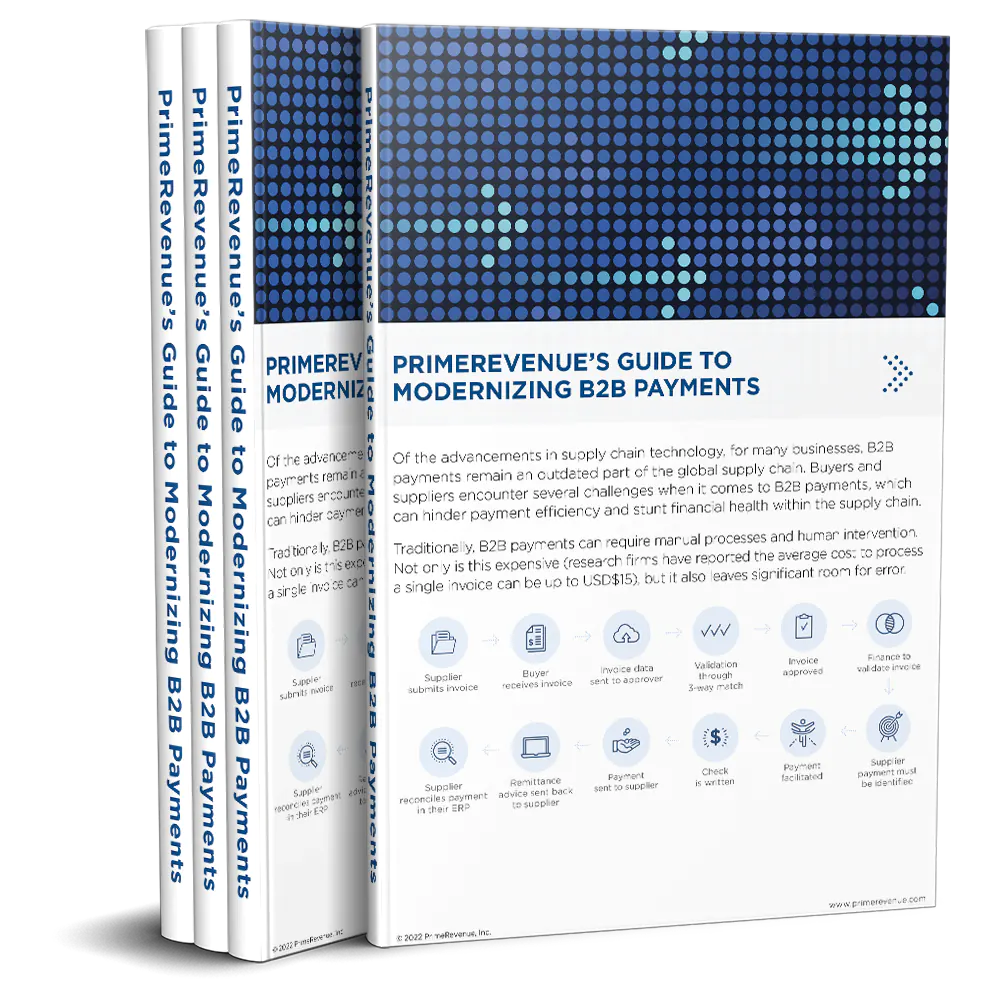A Fundamental Shift in B2B Payments Is Long Overdue
By • Published February 17, 2022 • 5 minute read
As companies seek ways to make their global supply chains more efficient, one area that needs immediate attention is business-to-business (B2B) payments. While noteworthy innovations have been made in the $518 billion global payments market, it’s still overwhelmingly complicated and costly for buyers to pay suppliers.
Research indicates the average cost to process a single invoice can be up to $15, and that cost may be increasing. Supply chain disruptions have accelerated efforts to diversify the supplier base as cross-border trade volumes increase. An influx of new suppliers across new jurisdictions have made supplier payments more cumbersome and costly to process.
Cost, of course, is just one part of the story. Most buyers use multiple payment platforms for their different supplier groups. Their accounts payable (AP) departments must manage multiple logins, update supplier information across multiple systems and navigate a host of other challenges like different jurisdictional regulations, inconsistent payment terms and various payment methods. Incremental efforts to streamline and integrate the B2B payments ecosystem are no match for these dynamics.
The complexity of B2B payments is more than just a buyer issue — it negatively impacts suppliers at a time when both parties are trying to normalize the supply chain. One PrimeRevenue survey found that 60% of suppliers had to contact their customers between 1 and 10 times per month to inquire about payment status; more than 10% said they had to reach out more than 10 times per month. Poor payment visibility impedes supplier forecasting while making it even harder for buyers to keep up with supplier payments.
As frustration among supply chain and finance executives percolates, there is demand for B2B payment solutions that streamline supplier payment — and a new crop of solutions is emerging in response. These solutions allow buyers to consolidate supplier payments onto a single platform that automates on-time and early payment. With all payments funneled through a single platform, buyers and suppliers can tap into much-needed payment visibility and flexibility while ensuring on-time payment for every invoice.
A single platform delivers a meaningful reduction in administrative resource requirements. There is no need to manage multiple payment platforms. Errors and delays are minimized as a result of efficiency. Full transparency into invoice approval and payment status means far fewer payment inquiries. Suppliers of all sizes, jurisdictions and currencies — as well as types of payment programs (e.g. supply chain finance, dynamic discounting or on-time payments) — are supported through one solution.
Outlook:
In 2022, companies will adopt B2B payment solutions that take a fundamentally different approach to streamlining supplier payments. Instead of piecemeal solutions, buyers will seek unified solutions that automate payment to all their suppliers — regardless of geography, size or payment program. This will effectively allow companies to outsource management of their financial supply chain and reduce the burden on AP departments.
This article was originally published on SupplyChainBrain.








